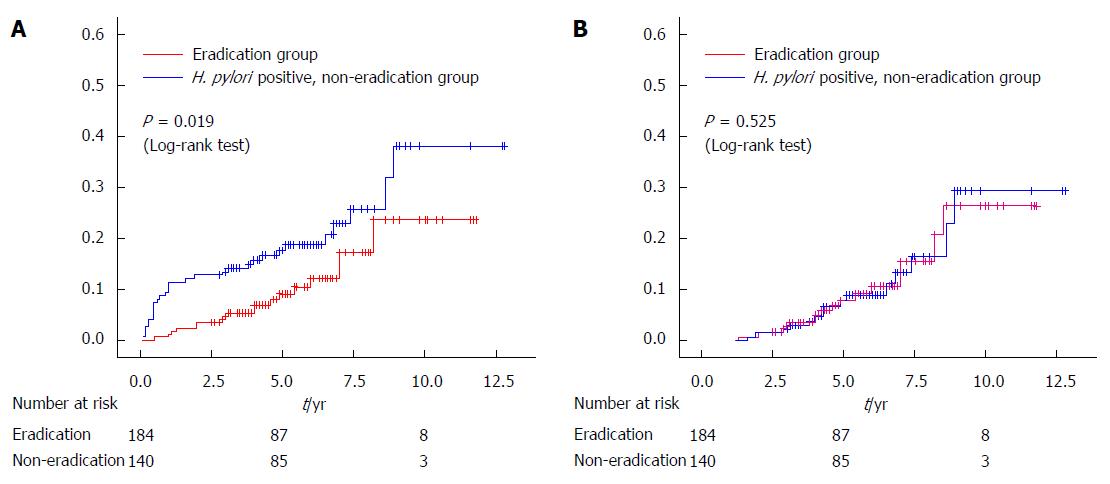Copyright
©The Author(s) 2015.
World J Gastroenterol. Oct 7, 2015; 21(37): 10553-10562
Published online Oct 7, 2015. doi: 10.3748/wjg.v21.i37.10553
Published online Oct 7, 2015. doi: 10.3748/wjg.v21.i37.10553
Figure 1 Kaplan-Meier analysis of the cumulative incidence rate of metachronous cancer in patients with and without Helicobacter pylori eradication therapy after endoscopic resection of early gastric cancer (adapted from our institute data[26]).
A: When second lesions detected within 1 year after endoscopic resection (ER) were handled as metachronous cancers, the detection rate in the eradication group was reduced significantly (P = 0.019, Log-rank test) compared with the non-eradication group; B: In contrast, when second lesions were defined as overlooked synchronous cancers and excluded from the metachronous cancer group, there was no significant difference between the two groups.
-
Citation: Kobayashi M, Sato Y, Terai S. Endoscopic surveillance of gastric cancers after
Helicobacter pylori eradication. World J Gastroenterol 2015; 21(37): 10553-10562 - URL: https://www.wjgnet.com/1007-9327/full/v21/i37/10553.htm
- DOI: https://dx.doi.org/10.3748/wjg.v21.i37.10553









